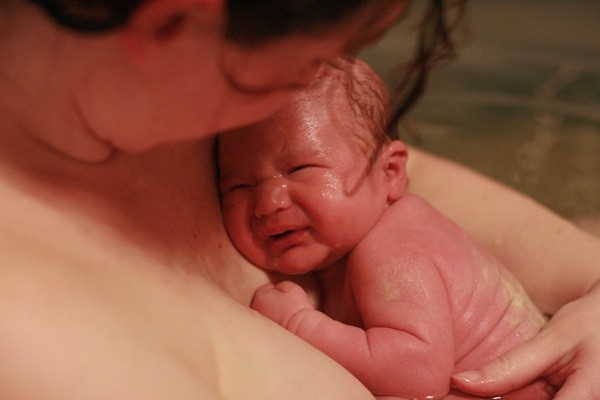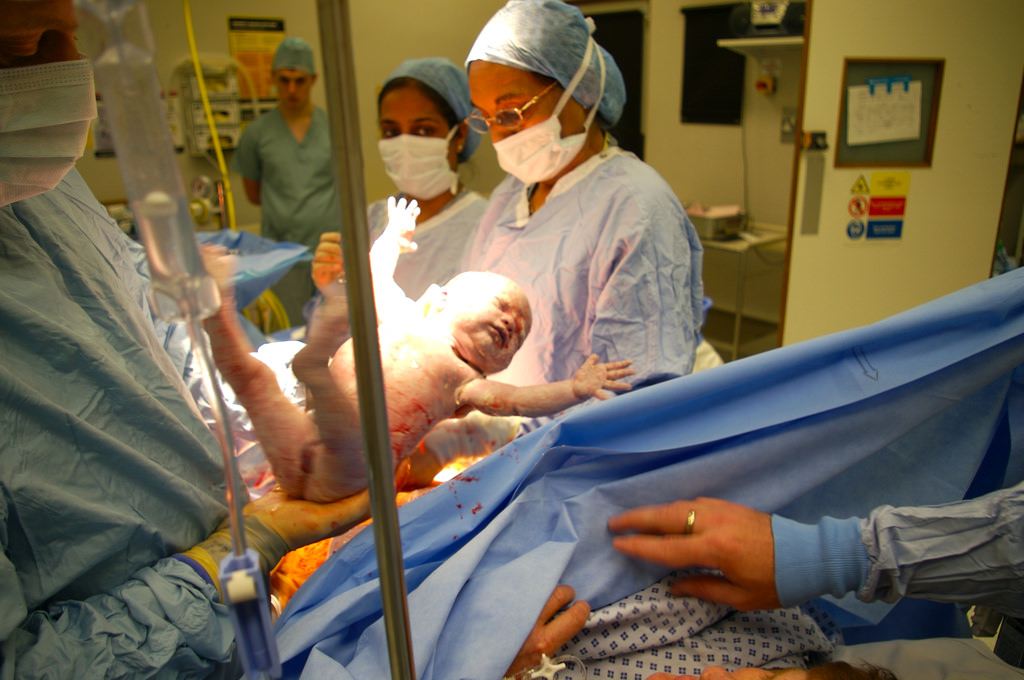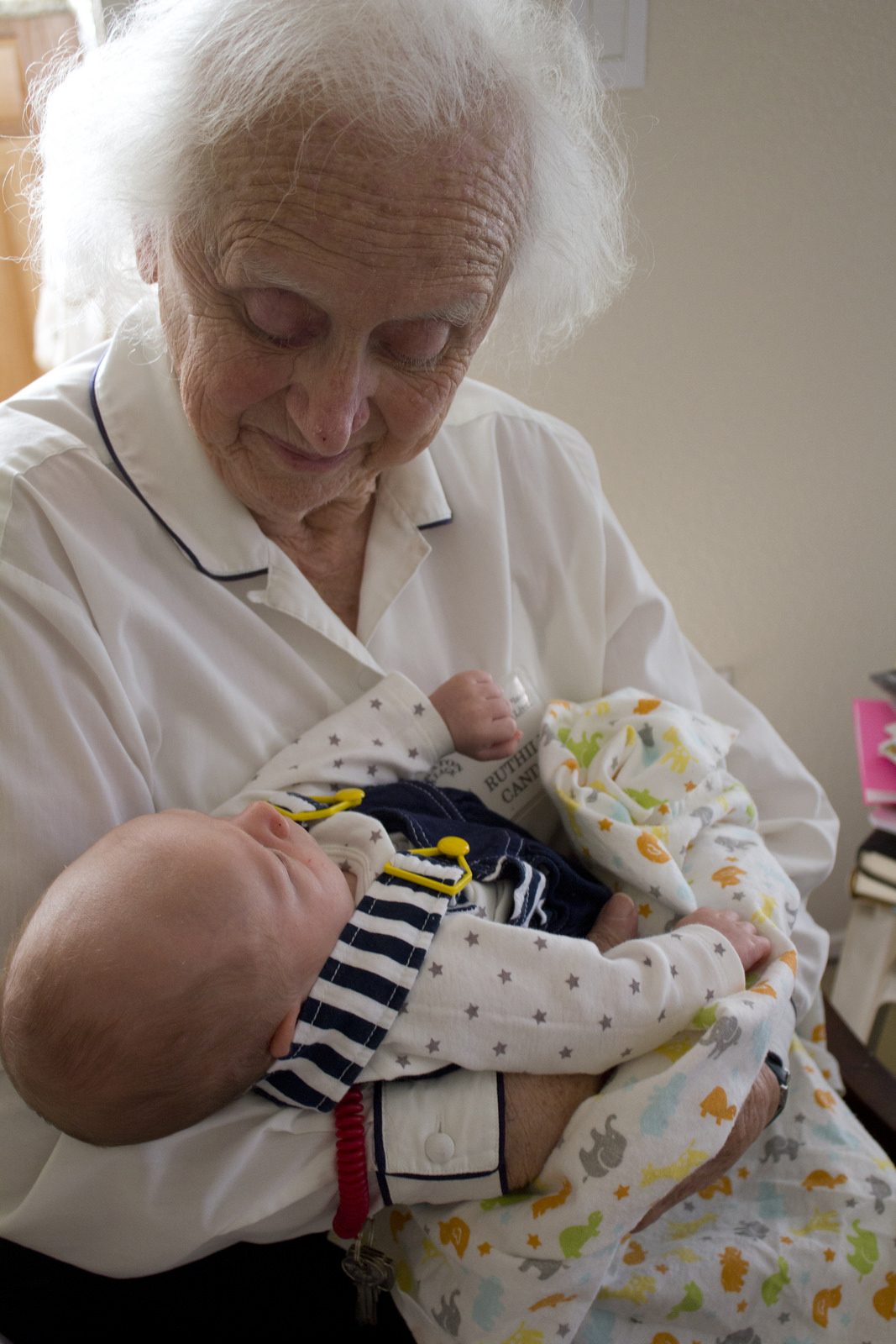 The first time I gave birth, my labor lasted over 20 hours. I was exhausted, but I was supported by midwives that taught me to trust my body and my baby’s timeline for childbirth. My second labor was a much shorter six hours.
The first time I gave birth, my labor lasted over 20 hours. I was exhausted, but I was supported by midwives that taught me to trust my body and my baby’s timeline for childbirth. My second labor was a much shorter six hours.
The length of childbirth labor can vary greatly, but if it goes too long, medical intervention kicks in. New evidence suggests we should give mothers more time.
Photo credit: HoboMama via Foter.com / CC BY-NC-SA
Just how long should childbirth labor last?
There are three stages of childbirth.
- Early and active: This stage has three phases. The cervix begins to dilate and contractions begin. This stage lasts from 6 to 12 hours for new mothers, but it can even begin a week earlier. The active phase lasts 2 to 3.5 hours as your cervix will continue to dilate to 7 centimeters. The final phase is transitional. The cervix continues to dilate to 10 centimeters. This last phase lasts from 15 minutes to an hour.
- Pushing: The second stage involves pushing your baby out. It begins when the head crowns. It lasts 30 minutes to one hour.
- Delivering the placenta: The last stage is 5 to 20 minutes long.
Different sources refer to different stages. The stages are just a convenient way to mark the passage of birth. ((http://www.mayoclinic.org/healthy-lifestyle/labor-and-delivery/in-depth/stages-of-labor/art-20046545))((http://www.pregnancy.com.au/resources/topics-of-interest/labour-and-birth/labour.shtml))((http://www.babycenter.com/stages-of-labor))((http://www.whattoexpect.com/pregnancy/labor-and-delivery/childbirth-stages/delivering-the-placenta.aspx))
New evidence suggests that during this second stage, doctors may be rushing things along. With the birth of my first child, this stage lasted three hours. That is two hours longer than birth guidelines. My midwives had never experienced a baby crowned for that long, and they considered doing an episiotomy, yet they remained patient. Episiotomies used to be routine procedures in childbirth, but research has found they do not heal better than natural vaginal tears.((http://www.mayoclinic.org/healthy-lifestyle/labor-and-delivery/in-depth/episiotomy/art-20047282))
Had I given birth in a hospital, medical interventions would have begun.
New research has found that if women were given just one hour longer in this second stage of childbirth labor, caesarean rates would be cut in half!
Dr. Alexis C. Gimovsky, MD and Dr. Vincenzo Berghella, MD of the Thomas Jefferson University Division of Maternal Fetal Medicine researched extending the time limits of the second stage of childbirth. Published in the American Journal of Obstetrics & Gynecology, the authors wrote:
Background
Guidelines for management of the second stage have been proposed since the 1800s and were created largely by expert opinion. Current retrospective data are mixed regarding differences in maternal and neonatal outcomes with a prolonged second stage. There are no randomized controlled trials that have evaluated whether extending the second stage of labor beyond current American College of Obstetricians and Gynecologists recommendations is beneficial.
Objective
The purpose of this study was to evaluate whether extending the length of labor in nulliparous women with prolonged second stage affects the incidence of cesarean delivery and maternal and neonatal outcomes.((http://www.ajog.org/article/S0002-9378(15)02594-6/abstract))
Caesarean rates are too high in the US, according to the World Health Organization. US c-sections rates are more than double WHO recommendations.((http://www.aol.com/article/2016/04/14/us-hospitals-perform-way-too-many-c-sections/21344466/))
Photo credit: MichaelEClarke via Foter.com / CC BY-NC-SA
ALL CAESAREANS “PUT WOMEN AT INCREASED RISK OF ADVERSE EVENTS, INCLUDING DEATH”.((http://eyr.lil.mybluehost.me/2010/01/14/who-all-c-sections-put-women-at-increased-risk-of-adverse-events-including-death/))
If something as simple as extending the recommended time for the second stage before medical intervention could reduce US c-section rates in half, we would reach WHO recommendations.
Consumer Reports explains:
Researchers estimate that almost half of the C-sections performed in the U.S. are done in situations when babies could be safely delivered vaginally instead. And performing a surgical birth when it isn’t necessary poses avoidable risks to the mother and her child and needlessly raises costs, research shows…
Life-threatening complications are rare whether babies are born vaginally or by C-section. But women with low-risk pregnancies undergoing their first C-section were three times more likely to die or suffer serious complications—such as blood clots, heart attack, and major infections—compared with women delivering vaginally, according to a 14-year analysis of more than 2 million women in Canada published in 2007 and cited by the ACOG guidelines.((http://www.consumerreports.org/doctors-hospitals/your-biggest-c-section-risk-may-be-your-hospital/))
Photo credit: quinn.anya via Foter.com / CC BY-SA
Your grandmother’s labor was was shorter
Only two generations ago, women experienced shorter childbirth labor. The average length of labor was under four hours 50 years ago. The stages of labor previously mentioned were developed based on this “labor curve” developed in the 1950s. NPR reports:
One big implication: Today’s obstetricians may be rushing to do cesarean sections too soon because they’re using an out-of-date yardstick for how long a “normal” labor should take.
“That’s absolutely correct,” says Dr. Ware Branch of Intermountain Healthcare in Salt Lake City, a study author. Lead author Dr. Katherine Laughon of the National Institute of Child Health and Human Development agrees…
“The past definitions of ‘normal’ labor have been used to draw the line as to when it’s time to intervene with a cesarean delivery,” Branch said during a telephone conference with reporters. “But what we’ve shown is that labor is actually longer … than it was 50 years ago. That certainly calls for a reassessment of when one should draw the line for cesarean delivery.”((http://www.npr.org/sections/health-shots/2012/03/30/149718838/babies-take-longer-to-come-out-than-they-did-in-grandmas-day))
Longer modern labors may be partially a result of older mothers and bigger babies than their counterparts 50 years ago. Most likely the cause is epidural anesthesia, which can delay childbirth as much as 90 minutes.((http://www.npr.org/sections/health-shots/2012/03/30/149718838/babies-take-longer-to-come-out-than-they-did-in-grandmas-day))
All of the women that participated in the new study on extending the second stage of labor by one hour had epidurals. ((http://www.ajog.org/article/S0002-9378(15)02594-6/abstract))
Hopefully, the results of this study will change the recommended guidelines. Women and babies should be given adequate time to labor before medical interventions. Every childbirth experience is different. We must respect this difference and allow women to labor at their own rate. As long as there are no other indications something is wrong, a timeline should not be rigid. I am thankful my midwives understood this.


Leave a Reply